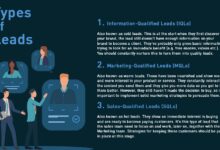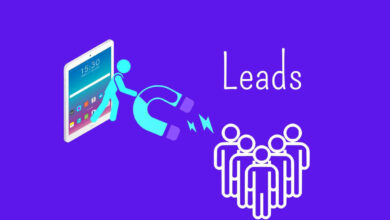Leads Density: 7 Powerful Insights to Skyrocket Your Conversions
Ever wonder why some marketing campaigns convert like crazy while others flop? It’s not just about traffic—it’s about leads density. This hidden metric could be the game-changer you’ve been missing.
What Is Leads Density and Why It Matters
Leads density is a crucial performance metric that measures the concentration of qualified leads generated per unit of marketing effort, traffic, or time. Unlike simple lead volume, leads density focuses on quality and efficiency—how many high-intent prospects emerge from your campaigns relative to input.
Defining Leads Density in Modern Marketing
Leads density goes beyond counting form submissions. It evaluates how effectively your content, ads, or landing pages convert visitors into meaningful leads. For example, if two campaigns generate 1,000 visitors each but one produces 100 marketing-qualified leads (MQLs) and the other only 10, the former has 10x higher leads density.
- Leads density = (Number of qualified leads) / (Total traffic or marketing spend)
- It can be measured per page, per campaign, or per channel
- High leads density indicates efficient targeting and compelling offers
“Leads density is the pulse of your conversion engine. If it’s weak, your growth will be too.” — Marketing Analytics Expert, Neil Patel
How Leads Density Differs From Lead Volume
While lead volume tells you how many people raised their hands, leads density reveals how many of those hands belong to serious buyers. A high volume of unqualified leads can waste sales team time and inflate costs.
- Lead volume: Total number of leads collected
- Leads density: Proportion of high-quality leads per visitor or dollar spent
- Example: 500 leads from 10,000 visitors = 5% conversion rate, but only 50 are sales-ready → leads density is 0.5%
Understanding this distinction helps marketers optimize for value, not vanity metrics.
The Science Behind High Leads Density
Generating high leads density isn’t accidental—it’s rooted in behavioral psychology, data science, and strategic targeting. When the right message meets the right audience at the right time, conversion efficiency skyrockets.
Psychological Triggers That Boost Leads Density
Human decision-making is influenced by cognitive biases and emotional cues. Incorporating these into your lead generation strategy increases the likelihood of conversion.
- Scarcity: Limited-time offers create urgency (e.g., “Only 5 spots left!”)
- Social Proof: Testimonials and user counts build trust (“Join 10,000+ marketers”)
- Authority: Certifications, logos, or expert endorsements increase credibility
These elements don’t just attract attention—they filter for intent, increasing the quality of leads and thus boosting leads density.
Data-Driven Targeting for Maximum Density
Using analytics to refine audience segmentation ensures your content reaches users most likely to convert. Tools like Google Analytics, HubSpot, and LinkedIn Insights allow granular targeting based on behavior, demographics, and firmographics.
- Behavioral targeting: Serve content based on past actions (e.g., pages visited)
- Firmographic filtering: Focus on companies by size, industry, or revenue
- Lookalike modeling: Use existing high-value leads to find similar prospects
HubSpot’s marketing analytics platform enables real-time tracking of leads density across channels, helping marketers pivot quickly.
Measuring Leads Density: Metrics That Matter
To improve leads density, you must first measure it accurately. This requires a blend of quantitative KPIs and qualitative assessments.
Key Performance Indicators for Leads Density
Several metrics help quantify leads density and identify optimization opportunities.
- Conversion Rate: % of visitors who become leads
- Lead Quality Score: Internal scoring based on fit and engagement
- Cost Per Qualified Lead (CPQL): Spend divided by number of sales-ready leads
- Time to Conversion: How quickly visitors move from awareness to lead
When combined, these KPIs paint a clear picture of your leads density performance.
Tools to Track and Analyze Leads Density
Modern marketing stacks offer robust tools to monitor leads density in real time.
- Google Analytics 4 (GA4): Tracks user journeys and conversion paths
- Marketo or Pardot: Automate lead scoring and nurture workflows
- Hotjar: Visualize user behavior with heatmaps and session recordings
Integrating these tools allows marketers to correlate traffic sources with lead quality, directly impacting leads density insights. For example, Google Analytics can show which blog posts generate the highest percentage of demo requests—key indicators of high leads density.
Strategies to Increase Leads Density
Improving leads density isn’t about generating more traffic—it’s about converting a higher percentage of existing traffic into valuable leads. Here are proven strategies to achieve that.
Optimize Landing Pages for Higher Intent
Landing pages are the frontline of lead generation. A well-optimized page aligns messaging, design, and offer to maximize conversion efficiency.
- Clear, benefit-driven headlines (e.g., “Get Your Free ROI Calculator”)
- Minimal form fields (only ask for essential info)
- Strong call-to-action (CTA) above the fold
- Mobile-responsive design
A/B testing different versions can dramatically improve leads density. For instance, changing a CTA from “Submit” to “Get My Free Guide” increased conversions by 32% in a VWO case study.
Use Lead Scoring to Filter Quality
Not all leads are created equal. Implementing a lead scoring model helps prioritize high-density prospects.
- Assign points for demographic fit (job title, company size)
- Add points for behavioral engagement (downloaded pricing sheet, visited pricing page)
- Deduct points for inactivity or mismatched signals
When sales teams focus on high-scoring leads, the effective leads density of the entire funnel increases.
Content Strategy and Leads Density
Your content is the magnet that attracts leads. But not all content generates the same quality of leads. A strategic approach ensures higher leads density across your content ecosystem.
Top-of-Funnel Content That Converts
Awareness-stage content should educate while subtly qualifying the audience.
- E-books and whitepapers with gated access
- Webinars with registration requirements
- Interactive tools (e.g., ROI calculators, quizzes)
These assets attract self-selecting, high-intent users—directly increasing leads density. For example, a well-crafted e-book on “B2B SaaS Pricing Models” will attract serious decision-makers, not casual browsers.
Mid-to-Bottom Funnel Alignment
As prospects move down the funnel, content must become more specific and solution-oriented.
- Case studies showcasing real results
- Demo videos with embedded CTAs
- Free trial offers with minimal friction
Content at this stage should be tightly aligned with sales goals. According to Content Marketing Institute, companies that align content with buyer journey stages see up to 50% higher leads density.
Channel-Specific Leads Density Optimization
Different marketing channels have varying capacities for generating high-density leads. Understanding these differences allows for smarter budget allocation.
Paid Ads: Maximizing ROI Through Targeting
Paid search and social ads can deliver high leads density when precisely targeted.
- Use long-tail keywords with high buyer intent (e.g., “best CRM for small law firms”)
- Leverage LinkedIn ads for B2B targeting by job function
- Retarget website visitors with personalized offers
Google Ads’ Smart Bidding uses machine learning to optimize for conversions, improving leads density over time.
Email Marketing: Nurturing for Density
Email remains one of the highest leads density channels due to its direct access to opted-in audiences.
- Segment lists by behavior and interest
- Use drip campaigns to nurture cold leads
- Include clear CTAs in every message
According to Campaign Monitor, segmented email campaigns generate 30% more opens and 50% higher click-through rates—directly boosting leads density.
Common Pitfalls That Kill Leads Density
Even well-intentioned campaigns can fail to generate high leads density due to common mistakes.
Overloading Forms with Unnecessary Fields
Every additional field on a form reduces conversion rates. Asking for “company revenue” or “number of employees” upfront may deter legitimate prospects.
- Start with name and email only
- Use progressive profiling to gather more data over time
- Only request critical info needed for qualification
Simplifying forms can increase leads density by up to 50%, as shown in HubSpot research.
Poor Audience Targeting
Targeting too broadly dilutes leads density. A campaign aimed at “everyone interested in marketing” will attract tire-kickers, not buyers.
- Narrow audience definitions using buyer personas
- Exclude irrelevant segments in ad platforms
- Use negative keywords in SEO and PPC
Precise targeting ensures your message reaches those most likely to convert, increasing leads density organically.
Future Trends in Leads Density Measurement
As AI and machine learning evolve, so does the ability to predict and optimize leads density before campaigns even launch.
AI-Powered Predictive Lead Scoring
Modern CRM systems like Salesforce Einstein and HubSpot AI use historical data to predict which leads are most likely to convert.
- Automatically assigns scores based on engagement patterns
- Identifies hidden correlations (e.g., time on page + device type)
- Improves leads density by focusing efforts on high-probability prospects
This shift from reactive to predictive analytics is transforming how marketers approach lead generation.
Privacy-First Tracking and Density Metrics
With cookie deprecation and GDPR, marketers must adapt how they measure leads density.
- First-party data collection becomes critical
- Zero-party data (info willingly shared) gains importance
- Contextual targeting replaces behavioral tracking in some cases
Companies that build trust and transparency will maintain high leads density even in a privacy-centric world.
What is leads density?
Leads density measures how many qualified leads are generated per unit of traffic, time, or marketing spend. It emphasizes quality over quantity and reflects the efficiency of your conversion funnel.
How do you calculate leads density?
Leads density can be calculated as: (Number of qualified leads) / (Total visitors or marketing investment). For example, 50 qualified leads from 5,000 visitors equals a leads density of 1%.
Why is leads density more important than lead volume?
Lead volume can be misleading—if most leads are unqualified, sales teams waste time. Leads density focuses on high-intent, sales-ready prospects, making it a better indicator of campaign effectiveness and ROI.
Which channels have the highest leads density?
Email marketing, targeted LinkedIn ads, and organic search (for high-intent keywords) typically yield the highest leads density. Paid social can also perform well with precise audience targeting.
How can I improve my leads density?
Optimize landing pages, simplify forms, use lead scoring, create high-value gated content, and target precisely. Regular A/B testing and data analysis are essential for continuous improvement.
Leads density is not just another metric—it’s a strategic lens for evaluating marketing efficiency. By focusing on quality over quantity, aligning content with buyer intent, and leveraging data-driven tools, businesses can dramatically increase the value of every visitor. Whether you’re running paid ads, crafting content, or refining email campaigns, optimizing for leads density ensures your efforts translate into real revenue. The future of marketing belongs to those who don’t just generate leads—but generate the right ones.
Further Reading:







